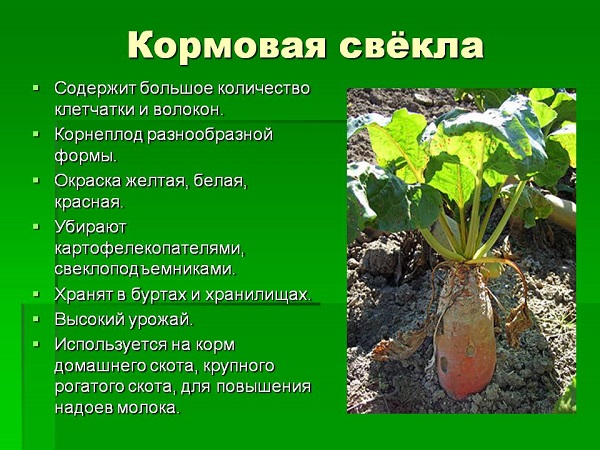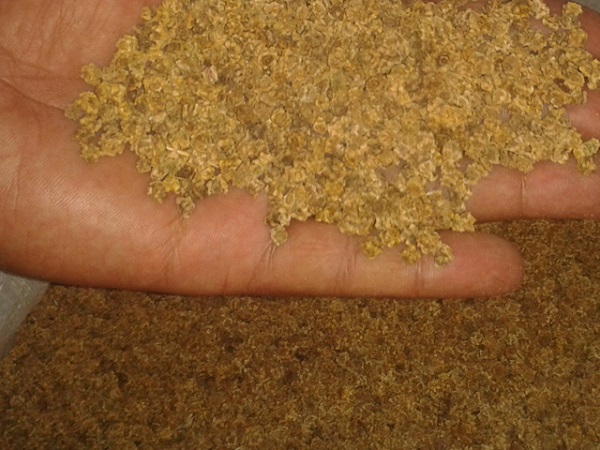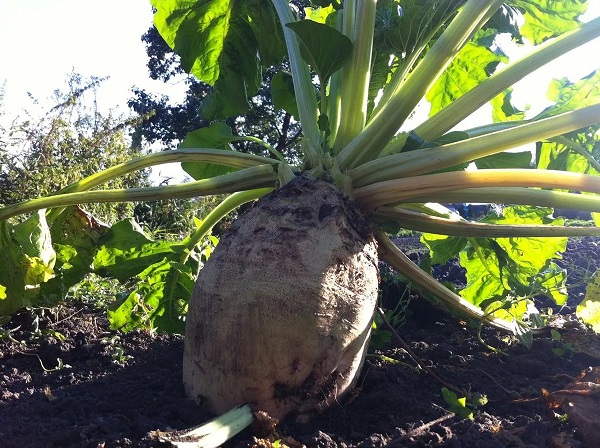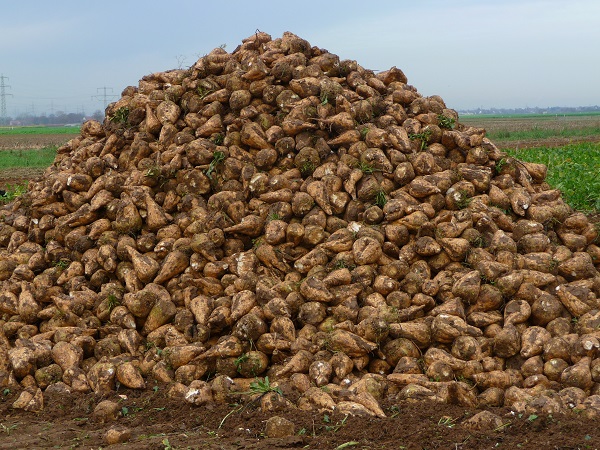Feed beets are actively used in feeding farm animals during the cold season. The root crop contains in its composition a sufficient amount of fiber, dietary fiber, which not only benefits the livestock, but also increases the level of milk and cows and goats.
Table of contents
Description and characteristics of fodder beet
Forage beet is a biennial plant, heading the family haze.In the first year of growth there is a thickening of the root, and sockets of the root part of the foliage. The following year, dormant buds are replaced by flowering shoots that bear fruit and seeds.
As a rule, vegetables rise above the ground. The formation of fodder beet occurs at the expense of the perimeter knee. A large number of pectins, dietary fiber and mineral salts in the composition can improve the level of assimilation and digestion of hay and silage in animals.

Yellow ekkendorfskaya or red - which sort is better to plant?
A vegetable popular in agriculture came to our region from the Far East and India. It originated from wild beets. Today, vegetables are grown in all regions of the country.
What kind of beet is better to plant at home? Red, yellow or pink? This question can be answered by reviewing the most popular varieties of this vegetable:
- Lada. Oval-cylindrical roots are painted white or pink-white. Despite the high degree of density, the vegetable pulp is rather juicy. The plant persists until harvest season. The flowering of vegetables is short.Variety Lada resistant to cercopiasis during storage.
- Hope. The elongated oval root crop is painted in red tones. White flesh juicy. The head is small, slightly convex greyish. Fruit variety, however, is prone to chalcosporosis and powdery mildew.
- Milan The single seed hybrid grows small. The root crop is recessed into the ground, only a small part of its greenish hue rises above the ground. The variety is sufficiently resistant to cercopiasis.
- Vermon - the result of crossing a triploid type, having a medium size. Cylindro-conical vegetable slightly immersed in the ground. A part of the beet that sits in the ground is painted white, the upper part is green.
- Jamon is a triploid hybrid. Medium-sized conic-cylindrical vegetable painted orange. Root stalks are short. Productivity is low, however, only to a small extent susceptible to disease.
- Particular attention should be paid to the variety of yellow Ekkendorf. Very popular grade not sensitive to low temperatures. It is easy to plant in open ground on the plot.

How to plant in open ground?
Fodder beets can be planted in the ground only when the temperature of the soil reaches 8 degrees.
As a rule, you can sow at the end of March. 14 days after sowing, you can see the first shoots.
The correct scheme of planting seeds
When planting, you must adhere to the recommendations, namely:
- To carry out tillage using herbicides, which will reduce the emergence of weeds.
- Depth should not exceed 5 cm.
- Plant keeping the distance between the laying of seeds about 40 cm.
- Run the crops, which will preserve the soil moisture.

Care during growth
To obtain a rich harvest should strictly adhere to the basic rules for the care of fodder buryak. The vegetable is not picky, therefore the agrotechnology of cultivation is available and does not represent special complexity.
Plant care rules:
- Timely carrying out loosening and weeding. In cases where the soil is crusted, this indicates a serious lack of oxygen.According to the scheme of planting a root crop, the procedure of loosening is supposed 48 hours after planting. Loosening is carried out using a flat-cutter, which is subsequently applied after each watering. Weeds are weeded until the bead tops are closed.
- Systematic watering, which is directly dependent on weather conditions. The most abundant watering must be ensured on dry days when the air temperature exceeds 30 degrees during the period of growth and formation of the root crop.
A month before harvesting, watering stops completely, which will increase the shelf life of the vegetable.
In the case of a rainy autumn between the rows should be made a gap that will allow excess fluid to leave.

Diseases and pests
Unfortunately, beetroots are very fond of pests. To protect the plant is required systematically as a preventive measure to use mineral fertilizers. Compost is required when carrying out the autumn soil digging. About 35-37 tons of fertilizer will be required per hectare. You can also include in the fertilizer wood ash (about 2 quintals).
Harvesting and Storage
Harvesting can be carried out using agricultural machinery or manually. As a rule, the choice of the method of harvesting depends on the area of sowing beets. A potato digger can be used to pick fodder roots.
The optimal collection time is the beginning of October. However, it is worth remembering that remove the beets from the ground before the temperature drops to 8 degrees.

After harvesting, the roots are slightly dried and sent to a storage facility, which is equipped with a ventilation system. The temperature in the room should be within 1-2 degrees.
Observing all the recommendations you can grow a rich crop of beets, which will please the grower. The most important time to implement weeding beds and watering plants. As soon as sprouts become owners of 2-3 leaves, it will be necessary to thin the plants, leaving only the strongest specimens. In addition, after each wetting of the soil, urgent loosening between the rows is required, which will preserve the natural process of air mass circulation.Thus, oxygen will get to the root system of the vegetable crop, which will enable the root crop to develop properly.
